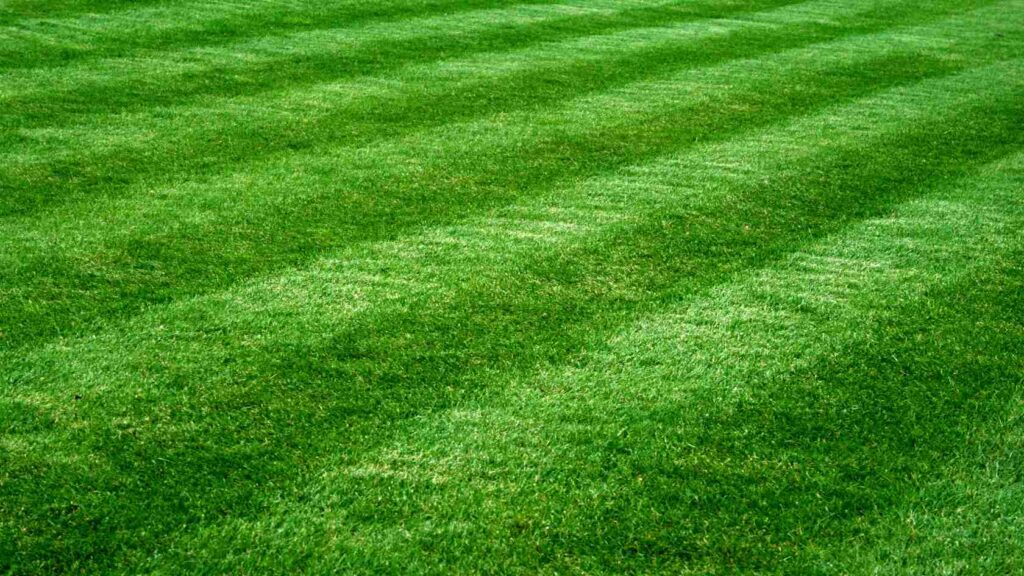Sprinkler System Maintenance Tips for a Healthy Lawn

Ever found yourself in a squabble with your lawn sprinkler system? Perhaps you’ve stared at an uncooperative sprinkler head, feeling like David against Goliath. Fear not, I’m here to help even the playing field.
I once had my fair share of green-thumb frustrations – misdirected sprinklers dousing me instead of the lawn, water leaks turning patches into swamps…you name it! It wasn’t until I discovered the power of regular Sprinkler System Maintenance Tips that things started looking up.
Sprinkler maintenance is essential to the health of your lawn. Consistent maintenance, such as cleaning and replacing sprinkler heads when needed, setting a watering schedule that suits the needs of your grass, along with regular checks on drains and main lines, can ensure you have a lush green landscape to enjoy. Remember: each element plays its role in achieving this goal.
Like waving a magic wand over your lawn. Set a plan for watering to guarantee your grass gets the correct measure of water at the ideal time, helping it develop soundly and keeping away from any unnecessary use of H2O. By scheduling your sprinkler system, you can take the guesswork out of lawn care and ensure that your grass is receiving an optimal amount of water at appropriate times for healthy growth while avoiding unnecessary waste.
Table Of Contents:
- Regular Inspection of Your Sprinkler System
- Cleaning Your Sprinkler Heads
- Checking Valves on Your Sprinkler System
- Testing Your Sprinkler System’s Voltage
- Importance of Professional Inspections
- Checking Drains and Main Lines Before Watering
- Ensuring Even Water Distribution with Properly Working Sprinklers
- Maintaining Adequate Water Pressure in Your Sprinkler System
- FAQs in Relation to Sprinkler Maintenance Tips
- Conclusion
Regular Inspection of Your Sprinkler System
Maintaining a lush, green lawn isn’t just about watering. It’s also about regular inspections to catch potential problems early.
A common issue is misting sprinkler heads, which can be caused by high water pressure or a worn-out nozzle. Misting results in water being wasted and uneven distribution across your lawn, leading to patchy grass growth.
Identifying Common Problems in Sprinklers
The key lies in understanding the signs of malfunctioning sprinklers so you can take action swiftly before minor issues become major headaches. Let’s explore some indicators:
- Misdirected sprinkler heads: Over time or due to accidental damage (like from mowing), spray patterns may get disrupted causing them not to cover intended areas but instead drench walkways or walls. Regular inspection helps detect these misalignments early.
- Broken water lines: A surprisingly soggy spot on your otherwise dry lawn could indicate a broken line beneath the surface – an issue that demands immediate attention because it wastes both water and money while potentially damaging other parts of your system.
- Clogged nozzles: Dirt, debris and even tiny insects can block the path of water exiting the head resulting in reduced flow rate, diminished range and poor coverage over time – all culprits for yellow patches appearing on lawns despite having been ‘watered’ regularly.
- Damaged valves: If you notice inconsistent watering times among different zones or low pressure throughout your entire system despite adjusting controls appropriately at the main valve, chances are there might be a leak in the valve itself.
By inspecting your sprinkler system regularly, you can catch these potential problems early and avoid more serious issues down the line. It’s like taking your car for regular oil changes to prevent engine damage – preventative care is always cheaper than major repairs.
A full inspection of your sprinkler system should be conducted at least once per season to avoid more serious issues arising in the future. That way, any wear and tear caused by weather fluctuations or lawn maintenance activities gets caught promptly. Don’t want surprises that could cause major headaches in the future, so it’s wise to check your equipment regularly.
Cleaning Your Sprinkler Heads
Dirty sprinkler heads can be the silent killer of your lush, green lawn. They might seem insignificant, but a clogged or malfunctioning sprinkler head can disrupt water flow and lead to patchy grass growth. But fear not. By taking proper care and cleaning your sprinkler heads regularly, you’ll help ensure an even spray pattern across your entire yard.
The Importance of Clean Sprinklers
Why does it matter if your sprinklers are clean? Picture this: You’ve got a finely tuned orchestra playing a symphony – each instrument working in harmony to create beautiful music. Now imagine one section is off-key because they’re trying to play their instruments through mud-caked filters. It ruins the whole performance, right?
In much the same way, when dirt and debris get lodged in your sprinkler heads, it throws off their ability to evenly distribute water throughout your lawn.
How To Clean Your Sprinklers Effectively
To keep things running smoothly (and avoid calling for professional help too often), make sure you know how to clean out those pesky bits that sneak into our systems despite best efforts at weed control and general lawn maintenance.
- Lift The Head: Carefully lift each individual sprinkler head from its casing with gentle pressure.
- Rinse And Repeat: Rinse the filter under warm tap water until all visible grime has been removed then replace back inside the head unit carefully making sure everything fits snugly before replacing soil around base area again so no leaks occur during next watering cycle.
Preventing Clogs and Malfunctions
Keeping your sprinkler heads clean isn’t just about removing visible dirt. Preventing damage that could lead to bigger issues is key for avoiding malfunctions in the future. For example, forcing a stuck head can result in a broken sprinkler head which would require more than just cleaning.
Think of it this way, these handy devices act like bouncers at a club. They’re there to catch any unwanted debris before they can reach and possibly damage your sprinkler heads. It’s a safeguard that could potentially avert any future issues.
Checking Valves on Your Sprinkler System
Keeping your sprinkler system in tip-top shape means ensuring there are no leaks. One key way to make sure of this is by checking the valves. A well-functioning valve should be leak-free and maintain proper water flow.
This cannot be emphasized enough. When you check valves on your sprinkler systems, it helps ensure that there’s no unwanted water seeping out, saving money and promoting water conservation.
Finding a Sprinkler Valve
To start with the inspection process, you need to find the valves first. This might seem like a daunting task if you’re not familiar with irrigation systems, but don’t worry – it’s simpler than it seems.
Your main valve usually sits near your house or somewhere along the main water line from your meter or pump station towards your yard.
You may also have individual zone control valves scattered around depending upon how complex your irrigation system layout is. The Spruce has some great tips for finding these elusive components.
Inspecting Your Valves
Moving onto actual inspection now. You’d want to look out for signs of wear and tear as well as any obvious leaks when inspecting each valve.
If you see puddles around an underground valve box even when everything else appears dry, that’s likely indicative of a problem.
Besides visible checks though – listen closely too. If all is quiet while running manually yet hissing sounds come up during automatic operation then we’ve got trouble brewing.
A quick tip here: if you notice any irregularities during the inspection, don’t delay repairs. It’s wise to nip potential problems in the bud by addressing minor issues before they become major.
Ensuring Proper Functioning
But it’s not just about spotting and fixing issues with your valves. Making sure they’re working at their best should also be a key part of your regular sprinkler upkeep.
Testing Your Sprinkler System’s Voltage
To ensure proper functioning, your sprinkler system requires the correct voltage level. It’s vital to test your sprinkler system’s voltage annually because it helps keep the irrigation working efficiently.
Using a multimeter for irrigation, you can easily check if your system falls within the ideal range of 22 to 28 volts. But why this specific range? Well, it’s simple. Too high or too low voltage may cause malfunctions in your watering schedule or damage your equipment over time.
The Importance of Testing Voltage Regularly
You might be wondering how often should you conduct these tests? According to industry standards and best practices, testing should be done every year. A yearly routine ensures that all components are running smoothly and allows for early detection of potential problems before they turn into costly repairs.
If during testing you find that the voltage is outside our suggested 22 to 28 volts range – don’t panic. It doesn’t necessarily mean an immediate disaster but indicates that some adjustments are needed. Be proactive about maintaining optimal performance.
A Simple Guide on How To Test Your System’s Voltage
To start with testing, get yourself a multimeter – a handy tool available at most hardware stores which measures electric current (voltage), resistance (ohms) and power output (watts).
- First off, make sure everything else in your house is switched off except for one zone in your sprinkler system – we want accurate readings without interference from other appliances.
- The next step involves locating your sprinkler system controller. This device typically looks like a small box mounted on the wall in your garage or basement.
- Set your multimeter to measure AC voltage, and then touch its probes to the common wire (usually white) and one of the zone wires in the controller.
If the voltage is not within this 22-28 range, it’s not a huge deal. It simply could mean that certain parts of your sprinkler system might need to be replaced or tweaked a bit. So, no need for major stress – these adjustments are usually pretty straightforward.
Importance of Professional Inspections
You may think your sprinkler system is running smoothly, but hidden issues can creep up. A professional inspection plays a crucial role in keeping it at peak performance.
Professional inspections of sprinkler systems are recommended periodically. This isn’t just about spotting visible problems like leaks or misdirected sprinklers; it’s also about detecting potential complications that aren’t immediately noticeable.
The Hidden Benefits of an Expert Eye
An expert knows what to look for and has the experience to anticipate common as well as rare issues. For instance, they can detect early signs of corrosion within pipes before a leak starts, saving you costly water waste and repairs down the line.
A seasoned pro also understands how changing seasons affect your system’s efficiency. They will help optimize its use according to these shifts ensuring optimal system performance year-round.
Detecting Problems Early Saves Money and Time
Catching issues early on helps prevent more significant problems later. Regularly scheduled professional checks ensure quick fixes before things get out-of-hand—saving both time and money.
This kind of preventative maintenance keeps repair costs low by avoiding major malfunctions requiring extensive work or complete replacement parts.
Maintaining System Efficiency
Inspection results often lead to small adjustments improving overall efficiency which translates into savings on water bills over time. By ensuring each component is working properly – from individual valves controlling water flow to backflow preventers protecting against contamination – professionals keep everything ticking along nicely while helping conserve our precious resource: water.
Beyond Routine Checks: What Pros Do Differently?
Certified irrigation professionals don’t just look at sprinkler heads and water lines. They test the main valve, too, and even check your controller’s voltage levels to make sure everything’s running smoothly.
Checking Drains and Main Lines Before Watering
Your sprinkler system is analogous to the vascular system in a body, providing water to all parts of your yard. The main lines are the arteries, pushing life-giving water to every corner of your yard. But what happens if there’s a blockage? Just as you’d go for a check-up at the doctor’s office, it’s crucial to make sure your drains and main lines are functioning properly before watering. Checking drains and main lines before watering is important; this small oversight had led to uneven irrigation causing parts of their beautiful lawn to dry out.
If you’re wondering how often should one inspect these ‘arteries’, well there isn’t a hard-and-fast rule, but it needs attention more frequently than you might think. It can depend on various factors such as age of pipes or external damage due to construction work or tree roots growth.
The Role Of Drains And Main Lines In Your Sprinkler System
Main water supply flows through these pipelines which then branches out into smaller networks reaching each sprinkler head installed across your property ensuring proper functioning and distribution of water. So just imagine – if they aren’t working right, neither will anything else.
In case you’re unsure where exactly these lie underground within your property boundaries, here’s some help. This guide explains strategies for finding hidden valves which may come handy while doing these checks.
Ensuring Even Water Distribution with Properly Working Sprinklers
If you’ve ever noticed dry and wet spots in your lawn, it’s likely that uneven water distribution is the culprit. Often, this issue can be traced back to missing or broken sprinklers which disrupt the smooth flow of water across your grass.
The good news? It’s a problem that can often be fixed easily with some simple maintenance tips.
Recognizing Uneven Watering Patterns
You don’t need a professional landscaper to tell when something isn’t right. Dry patches of grass, standing puddles, or weak and wilting plants are all signs pointing towards uneven watering.
Your garden should show consistent growth patterns if everything is working properly. So any inconsistencies could mean trouble for your sprinkler system.
Maintaining Your Sprinkler Heads
A key step in ensuring even water distribution starts at maintaining each individual sprinkler head on your irrigation system. Regular checks will help you identify issues such as clogged nozzles or misdirected spray patterns early before they become bigger problems leading to overwatering some areas while leaving others parched.
Cleaning out clogged filters, adjusting angles for better coverage, and replacing worn-out heads can go a long way in improving how well each part works together as a whole.
Paying Attention To Pressure Levels
Sometimes an issue might not lie within the actual mechanics but rather outside factors like higher water pressure levels affecting overall performance. By testing these levels regularly using tools such as Rain Bird’s pressure gauge, you’ll have more control over adjustments needed for optimal water flow.
To ensure optimal water flow, it is important to understand how to use tools such as Rain Bird’s pressure gauge for regular testing of water pressure levels.
The Importance of Proper Placement
Sprinkler placement plays a significant role in determining whether your lawn gets evenly soaked or not. The general rule of thumb here is to place sprinklers so that each one’s spray reaches the next head, creating an overlapping effect for full coverage.
This method, also known as “head-to-head” spacing, ensures no area remains untouched by precious hydration.
Maintaining Adequate Water Pressure in Your Sprinkler System
Water pressure plays a vital role in the efficient operation of your sprinkler system. It’s like blood pressure for humans – too high or too low, and things just won’t work right. Let’s talk about how to maintain an ideal water pressure range for lawn irrigation.
The Role of Water Pressure
Think of water flowing through your sprinkler system as traffic on a highway. Too much can cause congestion (high water pressure), while not enough leaves lanes empty (low water pressure). Both situations are far from ideal and could lead to inefficient watering.
A well-maintained sprinkler system should operate within 30-50 PSI (Pounds per Square Inch) – that’s like driving at the speed limit. Going beyond this range may cause misting where droplets become so small they’re carried away by wind instead of reaching your grass roots.
Steps to Maintain Adequate Water Pressure
To start with, make sure you have control over your main valve; it’s essentially the boss when controlling flow and direction. Think about how important knowing where it is, because if something goes wrong, you need access it fast.
- Clean Sprinklers: Regular cleaning keeps nozzles free from debris that might disrupt spray patterns and affect overall performance.
- Schedule Zone Check-Ups: Don’t forget routine zone checks help detect issues early before turning into costly repairs – saving both money and resources.
- Tuna Cans Trick: Place empty tuna cans around your lawn while watering. If some fill up faster than others, it’s a clear sign of uneven water distribution due to pressure issues.
FAQs in Relation to Sprinkler Maintenance Tips
How long should you run each section of sprinklers?
Your lawn’s watering needs dictate how long to run the sprinklers. Generally, 15-30 minutes per zone works well.
What is the best way to lubricate sprinkler heads?
Lubricating with a silicone-based spray helps keep your sprinkler heads functioning smoothly without damaging them.
How long should I run my sprinklers daily?
Aim for early morning watering, running your sprinklers about 20 minutes in each area for optimal grass health.
How do I reduce water usage on my sprinklers?
To save water, adjust your irrigation schedule based on weather conditions and invest in high-efficiency nozzles or rotators.
Conclusion
Caring for a flourishing lawn doesn’t have to be complicated. Not with the right sprinkler system maintenance tips at your fingertips.
You’ve learned that regular inspection of your sprinkler system is vital, catching potential problems before they wreak havoc on your green haven. And remember: cleaning those sprinklers isn’t just a suggestion – it’s key!
Scheduling watering times smartly saves water and promotes lush growth. Regular checks on drains and main lines ensure proper functioning while caring for each individual sprinkler head helps achieve even water distribution.
Managing water flow and pressure optimizes irrigation efficiency, seasonal tasks like flushing maintain smooth operation, annual voltage testing ensures optimal performance; professional inspections help catch anything you might miss.
All these steps make for not only a vibrant yard but also conservation of precious resources like water. You’re well-equipped now to win any battles against stubborn lawns or misbehaving equipment!
As an Amazon Associate, we earn from qualifying purchases. Affiliate links help support our work and allow us to continue providing free content. If you make a purchase through an affiliate link, we receive a small percentage of the sale at no extra cost to you.
The DIY repair advice on this site is for informational purposes only. The content aims to be helpful but cannot guarantee success or substitute professional advice. Any repairs involve some risk, so readers assume all liability and responsibility for their actions. Safety should be the top priority. If unsure about any procedure, first consult a qualified professional to determine suitability.
- Sprinkler Rebate Guide
- Slash Your Water Bill and Save the Planet with Sprinkler Rain Sensors!
- How to Revive a Lawn: Bringing Your Drought-Stricken Lawn Back to Life
- Sprinkler Repair Costs: The Shocking Truths You Need to Know!
- Gardeners Won’t Believe These Raised Bed Irrigation System Hacks!
- 11 Shocking Secrets to Buying the Perfect Sprinkler Heads
- A Comprehensive Guide on How to Adjust the Rainbird 5000 Sprinkler Head
- The Complete Step-by-Step Guide to Design a Sprinkler System
- Residential Sprinkler Head Types: A Comprehensive Guide
- Thank You For Subscribing




